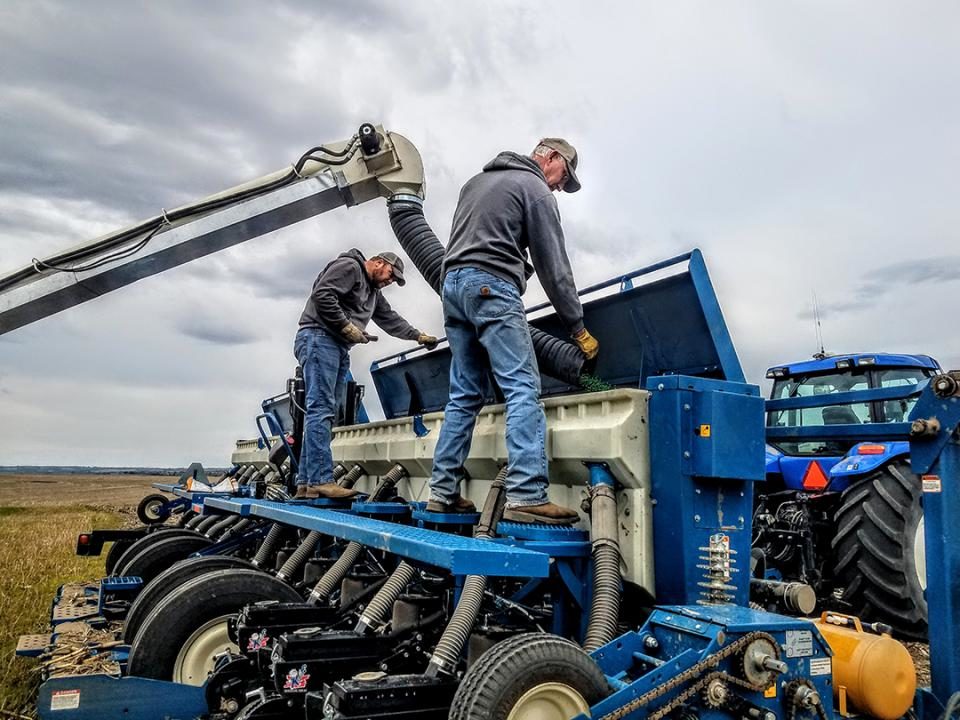As planting gets started, you may be considering what management practices will increase soybean yields. In 2021, Nebraska farmers completed a three-year on-farm research study which evaluated a suite of management practices that could increase soybean yield and profitability. A total of 14 studies were conducted from 2019 to 2021
The study utilized a unique approach: the practices that were tested (planting date, seeding rate, and fungicide and insecticide application) were identified using survey data, testing the hypothesis that surveys could be used to identify which management practices resulted in increased yields. The study was part of a collaborative effort with the University of Wisconsin, Ohio State University, Michigan State University, Iowa State University, North Dakota State University, University of Minnesota, and University of Nebraska. Each state evaluated a different suite of practices which were determined important for the region using local survey data. The full multi-state results are available here.
In Nebraska, the studies examined planting date, seeding rate and the use of foliar fungicides and insecticides. The protocol that was implemented evaluated a “baseline” treatment, which was considered to be the standard practice, and an “improved” treatment, which utilized practices that are associated with higher yields.
The baseline treatment consisted of a later planting date, higher seeding rate, and no foliar fungicide and insecticide treatment.
The improved treatment consisted of an earlier planting date, lower seeding rate, and foliar fungicide and insecticide treatment.
Previous studies in Nebraska have shown yield benefit from planting soybeans earlier and economic benefit from using a lower seeding rate. This study, however, looked at the collective impact of planting date, seeding rate, and foliar fungicide and insecticide applications.
Yield and Profitability Results
The yield increase for using the improved management practices was on average 4.7 bu/ac across all sites and years (Figure 3). The profit increase for using the improved management averaged $30/ac.
Brothers Larry and Lonnie Schafer, who farm corn and soybeans near Tobias, Nebraska, evaluated these practices in both 2019 and 2020. For Lonnie, the interest in participating in this study stemmed from his desire to learn more about soybean planting date and seeding rates.
“We’ve always been curious about soybean planting dates and populations, and this seemed like a good fit,” Lonnie Schafer explained.
Larry Schafer noted that the project did take some extra time to implement, but that his local extension educator was available to help with plot design and data collection and that agriculture technologies made it easier to conduct the study. Due to what they learned from their research trials, Lonnie said they would like to implement an earlier planting date for soybeans on their operation.
Paul Maresh, who farms near Dodge, Nebraska, participated in all three years of the soybean benchmarking study.
“The first year, the biggest thing was a noticeable difference in yield,” Maresh explained.
Maresh’s studies showed significant yield increases of 7.5 bu/ac in 2019. But Maresh had remaining questions and wondered how much of the yield increase was due to using a fungicide and insecticide.
“My local elevator says you need to use fungicide and insecticide because it pays,” Maresh said. “I figured you needed to do a true side-by-side to see if there was a difference.”
In 2020 and 2021, Maresh added an additional study along with his benchmarking experiment to look at the impact of applying fungicide and insecticide alone.
In 2020, in the fungicide and insecticide alone study, there were no yield differences between the treated and the untreated check. This indicated the 4.2 bu/ac yield increase for the 2020 benchmarking study was attributed to planting date and seeding rate.
In 2021, there was a 3.6 bu/ac yield increase in the plots where fungicide and insecticide were applied. This suggests that in the 2021 soybean benchmarking study, the 5.3 bu/ac yield increase came primarily from the fungicide and insecticide use (3.6 bu/ac increase) and secondarily from the planting date and seeding rate (1.7 bu/ac increase).
What's Next
Precision ag technologies can make conducting your soybean management study relatively easy. Producers with variable-rate planting capabilities can evaluate soybean seeding rate with a prescription. Yield data is collected on the go with a yield monitor, and analysis can reveal the optimum seeding rate overall and in different management zones within the field.
Other treatments can be logged at planting with GPS. For example, one producer plans to evaluate the interactions of seeding rate, planting date and soybean variety in 2022, logging the varieties and planting dates in the monitor at planting and utilizing a variable rate prescription to test various seeding rates.






